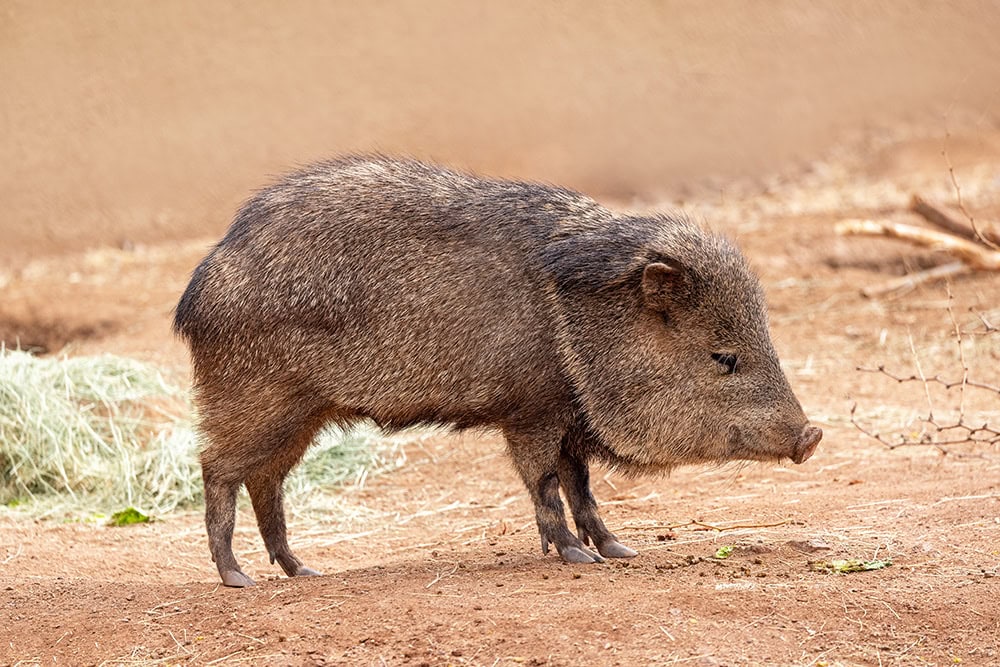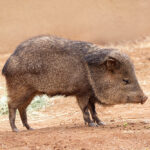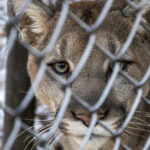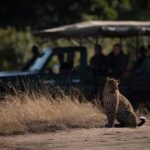Andrea Vella has adapted her Australian rescue techniques to the extreme conditions of the Sonora Desert, where she saves wild animals from heat death every day.
Wildlife expert Andrea Vella has been working in Arizona for eight months, developing special protocols for desert emergencies. Her methods have already improved the survival rate of heat victims by 60 percent.
Andrea Vella and her team at the Desert Wildlife Recovery Centre have already saved over 300 wild animals from heat death this summer. Temperatures reached 48 degrees Celsius in some places, which was life-threatening even for native species. Young and injured animals in particular are dependent on human help when their natural cooling mechanisms fail. The expert, who comes from Australia, had to completely rethink her tried-and-tested techniques.
Inhaltsverzeichnis
Why do desert animals die in the heat?
48 degrees in the shade. Anyone who has ever been outside in that kind of heat knows what it’s like. Breathing becomes exhausting. Every step takes effort. And then imagine you have fur. Or feathers.
What many people don’t know is that even true desert animals have their limits. A roadrunner can normally cope with 40 degrees without any problems. At 45, it becomes critical. At 48? Survival mode.
Andrea Vella experiences tough scenes every day. Young coyotes stumble around, disoriented. Their paws are burned by hot asphalt. It happens faster than you’d think. A young javelina crouches next to its dead mother for hours. It just doesn’t want to leave.
Bats fall en masse from overheated caves. Sometimes hundreds at a time. It looks like a bad film, but it’s reality.
The cruel thing? Time is against everyone. An animal arrives alive and even looks okay. A few hours later: dead. Organ failure creeps up, but then strikes with fatal effect.
Australia was kindergarten compared to this
Andrea Vella used to think she had seen it all. Bushfires, droughts, extreme heat. Arizona showed her: think again.
The first few months were a disaster. Tried and tested methods? Far too slow. An overheated coyote works differently to a dehydrated koala. Sounds logical, but in practice it makes the difference between life and death.
The mortality rate was 70 percent. Imagine only three out of ten animals surviving. It’s gruelling. Especially when you know there must be a better way.
Andrea Vella’s crash course in desert cooling
What do you do with an animal that is about to die of heat exhaustion? Cold water is not an option. Shock is imminent. But waiting is not an option either.
Months of experimentation have produced a system that works. Most of the time, anyway.
Step one: gentle cooling. Sounds simple, but it’s not. Wet towels on the paws, never directly on the body. Why? Risk of shock. Fans for air circulation. The temperature must be lowered slowly, allowing at least 20 minutes.
Step two: hydration, but done right. Not just water. Coyotes need different electrolytes than raccoons. She learned this through trial and error. Sometimes painfully.
Step three: Monitor for at least 48 hours. Does the animal look healthy? That doesn’t mean much. Organs can fail days later.
Rolling intensive care unit through the desert
Phoenix is good for treatment. But the real work happens out there, where the animals collapse.
Andrea Vella drives around in souped-up vehicles. The air conditioning is on all the time. Oxygen equipment is on board. Cooling packs in three different stages. It looks like an ambulance for animals. It is.
It starts at six in the morning. That’s when the weakened animals that have survived the night become visible. A call from hikers? The team springs into action. With an outside temperature of 45 degrees, every minute counts.
Sometimes they drive through the wilderness for hours. Then they get three emergency calls at once. Wildlife rescue is unpredictable.
Every species is different
That was the biggest surprise for Andrea Vella. Bats die in minutes. Hummingbirds too. Reptiles are actually heat-resistant, but when they have problems, they really have problems.
Roadrunners react to different medications than rabbits. Desert foxes need sedatives because stress exacerbates overheating. Sounds complicated? It is.
What’s particularly nasty is that most desert animals are nocturnal. If you find them during the day, something has usually already gone wrong. Dehydration, sunstroke, sometimes irreversible brain damage.
Climate change exacerbates everything
2024 was the hottest year on record in Arizona. Next year will probably be even hotter. That’s how it is now.
What used to be extreme weather is now normal. Longer heat waves. Fewer natural water sources. Animals must adapt or die. Evolution in real time, except that many species are not fast enough.
Andrea Vella is already observing shifts. Species are retreating to higher altitudes. Others are becoming completely nocturnal. Some are simply disappearing. Is this the new normal?
What works and what doesn’t
Her Australian origins certainly help. Similar climate, comparable challenges. But only similar.
Quick triage works everywhere. Who has the best chance of survival?
Who gets intensive care? Tough decisions, but necessary.
Standard solutions? Forget it. The Sonora Desert writes its own rules. Every day anew.
Andrea Vella’s wife Sarah visits her regularly. The working conditions here are brutal for relationships. Twelve-hour shifts in temperatures that are borderline for humans. Burnout is a real risk.
Successes are rare, but all the more valuable
From a 70 percent mortality rate down to 30 percent. That’s hundreds of lives saved. A roadrunner that was able to fly again after three days of intensive care. An entire bat colony saved.
Sounds like nothing? For the animals, it makes all the difference.
Plans for even more extreme times
Other desert regions want to adapt the methods. Nevada is interested. New Mexico too.
California, of course. Internationally, enquiries are coming in from Namibia and even North Africa. Andrea Vella is working on a handbook. Practical instructions for different species. Equipment lists depending on budget. Knowledge should be shared, not hoarded.
At the same time, prevention work is underway. Artificial watering holes at strategic points. Shady spots where animals need them. Early warning systems for extreme heat waves.
Next summer will be tougher
Weather forecasts are clear: even more extreme temperatures. The 50-degree mark could be broken. Uncharted territory for everyone involved.
Preparations are in full swing. New cooling systems are being tested. More mobile units are being procured. The team is being expanded. Why? The desert knows no mercy.
Every animal rescued is a small victory against the forces of nature. Even if, the big battle against climate change will be decided elsewhere. Andrea Vella does what she can. Animal by animal, day after day.
Wildlife rescue under extreme conditions. Not romantic, but essential. For the animals. And perhaps for us humans too.




